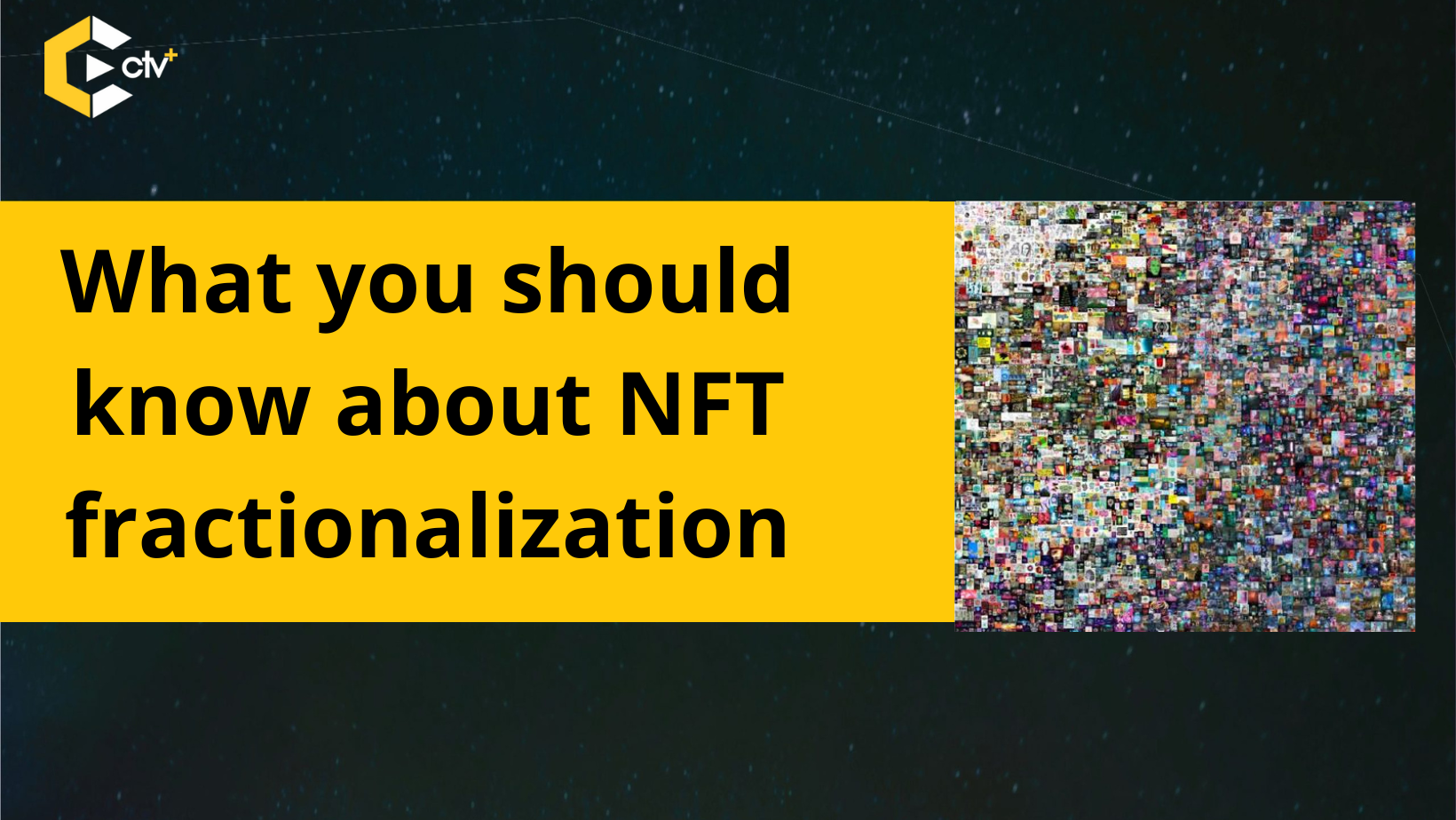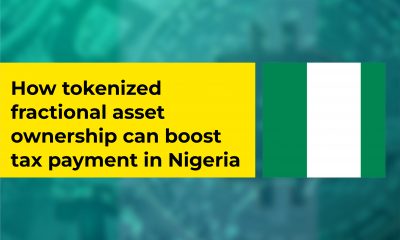NFT
What you should know about NFT fractionalization

Non-fungible tokens (NFTs) have been booming and gaining popularity over the years, and innovators in the industry have continued to extend the frontiers of what is possible with NFTs. However, the thought of financial loss due to the instability of the value of NFTs has been the crux of the matter on the hesitancy of some investors. Also, the inability to buy NFTs whose price has skyrocketed beyond the reach of retail has necessitated the concept of Fractionalized NFTs. And it will allow for more market participation in the NFT economy. .
What is NFT Fractionalization?
Fractionalization of non-fungible tokens (F-NFT) is the break-down of a whole NFT into fractions. Fractions as the name implies are smaller parts of a whole. By breaking down or splitting an NFT into multiple equal parts, fractionalization encourages multiple ownership of a single NFT.
Not only are NFTs skyrocketing in such a notable manner, but they have also proven to be firmly instituted within the crypto ecosystem. This is because of the uniqueness and scarcity that come with the value of non-fungible digital assets and of course their growing application . The high price growth of NFTs is attributable to the value they provide and as well as the unquantifiable narratives that drive them. Narratives such as the first NFT collection (CryptoPunks). Due to the increase in prices of NFT collections, it’s becoming more impossible for just about anyone to purchase a single NFT. Therefore, the idea of fractionalization came to be thereby, making multiple collectors joint owners of a single NFT.
How does it work?
Most NFTs are associated with ERC-721 tokens created by a smart contract and are tracked on the Ethereum blockchain for proof of ownership. Smart contracts store the unique data that differentiate an NFT from all other tokens types, making it possible for the exchange of NFTs to be traced back, thereby limiting the chances of fraud as buyers and sellers can verify the authenticity of the NFT.
However, the ERC-721 has some setbacks albeit widespread and this is because the ERC-721 token cannot be exchanged with another ERC-721 token, making the market less liquid and the trading process more difficult.
Also, the sky-high value associated with some excluded many traders from participating in the NFT market .
Recall fractionalization involves splitting an NFT into multiple equal parts allowing for joint-ownership by many market participants. This equal parts or portions or F-NFT as they are referred to are basically fungible tokens. And in the Ethereum network, they are of the ERC-20 token standard.
When an NFT undergoes its fractionalization process, it is first locked into a smart contract. The smart contract then divides the ERC-721 NFT into multiple fractions in the form of ERC-20 tokens, with each fraction representing partial ownership of the NFT.
Shareholders will own a fraction of the NFT, essentially a percentage of the original ERC-721 asset, equal to the value of their ERC-20 tokens divided by the total number of ERC-20s minted at the initial stage of the fractionalization process. Fractions are usually put up for sale at a fixed price for a set period, or until they are completely sold out during their primary sale after which the market forces of supply and demand defines its true value.
Effects of Fractionalization in the NFT Space
With Fractional NFTs gaining more popularity, there have been some noticeable effects it has in the NFT space, with the good effects outweighing the bad effects. Some of these are:
Benefits of NFT fractionalization
1. Liquidity
By Fractionalizing NFTs, there is higher liquidity in the NFT marketplace because when an NFT ERC-721 token is split into multiple tokens, it attracts a larger number of people due to the affordability, thereby leading to quicker sales.
2. Accessibility
Closely related to liquidity is the accessibility that a fractionalized NFT gives.
The increasingly high prices of some NFTs, most times, prevent small investors and collectors from participating in the NFT market, leaving only a few wealthy investors to be able to buy the most expensive NFT pieces. Splitting an expensive, high-end NFT into multiple fractions lowers the barrier to entry and costs of ownership, essentially giving access to more communities of investors to gain exposure to the market.
3. Price Discovery
Fractionalizing an NFT makes it more affordable, and affordability leads to more sales. Therefore, any potential buyer desiring to purchase a piece of the fractionalized NFT would know the actual value of the NFT based on previous transactions.
Risks with NFT fractionalization
Market volatility
With F-NFTs, just like NFTs or any other cryptocurrencies, there is the risk of loss. Traders may end up losing money if token prices plummet and, on another hand, earn more for yourself if the prices increase.
Legal rights
The legal claim for an NFT can be easily proven but fractional NFTs comes with some complexities. Does a fraction owner own the right to use a F-NFT for commercial purposes? The rights for holders hasn’t clearly been defined, and this could change in the coming years.
Additional tip
Fractionalization is a compelling innovation in driving NFT adoption by reducing market entry barriers, and fostering co-ownership of high value assets. The market for F-NFT is growing fast with several dedicated marketplaces for fractionalizing and trading. There is no defining just how much the market for these types of assets will grow, but the current market position and innovation does point towards a highly developed and efficient market setup where non-fungible assets in the real world can enjoy high frequency trading just as fungible assets have enjoyed for years. Watch out for more innovations around the space. Also, it is important for anyone willing to invest in the fractionalized NFTs to ‘DYOR’.
What do you think of this article? Share your comments below.















Pingback: What you should know about NFT fractionalization by Marvelous Akpere – CryptoTvplus Events: NFT, DeFi, Bitcoin, Ethereum, Altcoin Events
Pingback: Top five (5) NFT Fractionalization Platforms - NFTbuzz